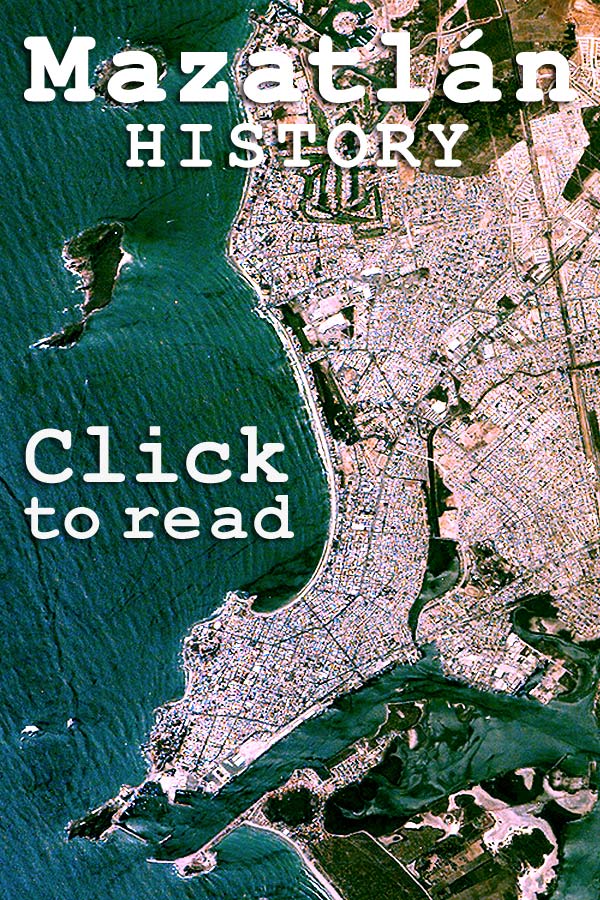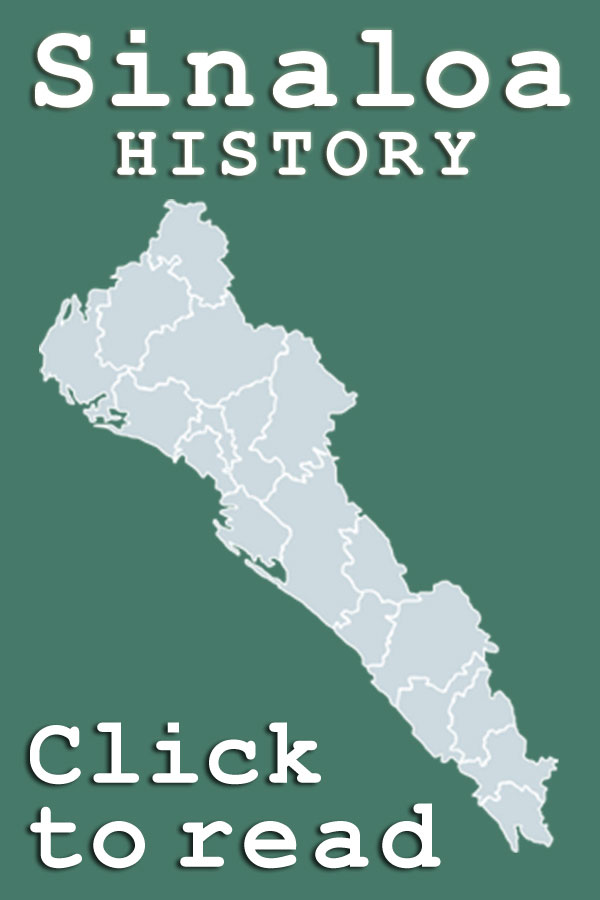Día de los Muertos in the Mazatlán Centro Historico
Friday November 1, 2024
Flamenco dance at the Día de los Muertos Plaza Machado Mazatlán stage in the Centro Historico
Enjoy our Day of The Dead content from past years, and this small gallery of our Centro Historico Dia de Los Muertos participants, especially our wonderful Mazatleca Catrinas!
Day of The Dead faces encountered in the Mazatlán Centro Historico...





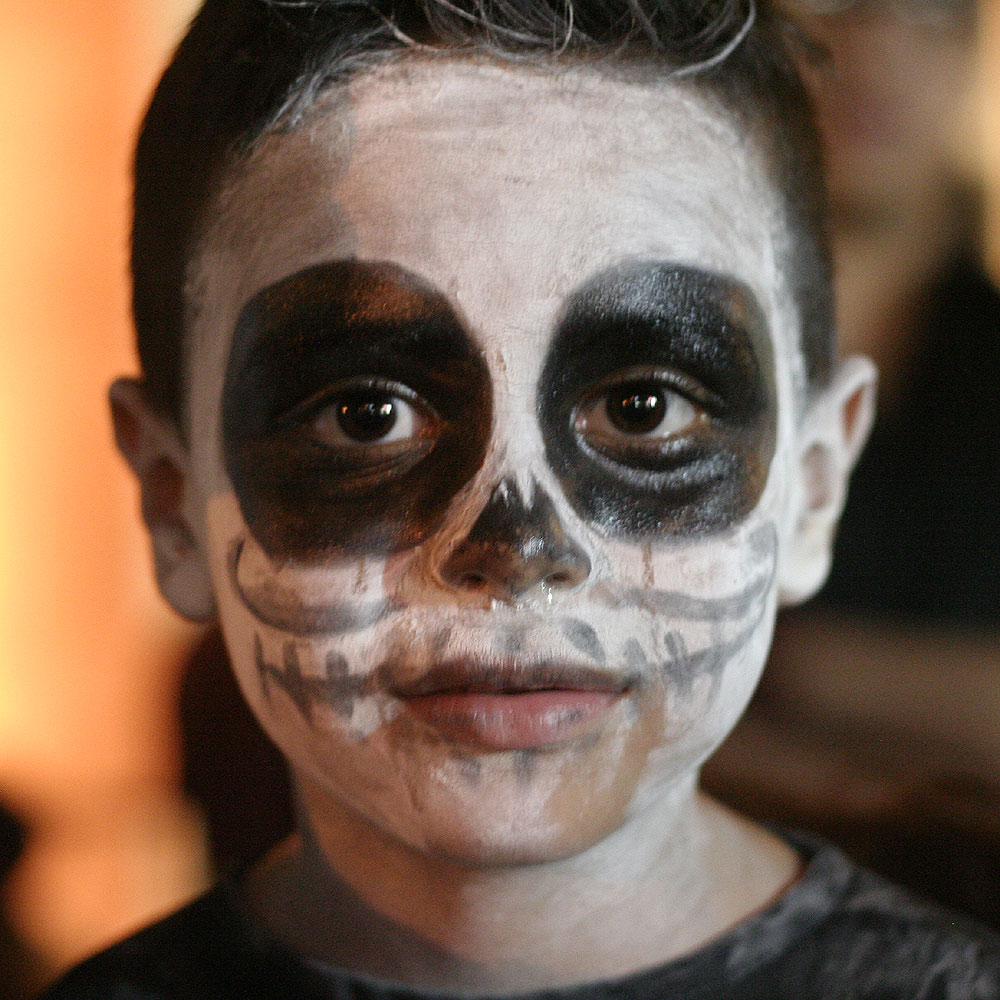

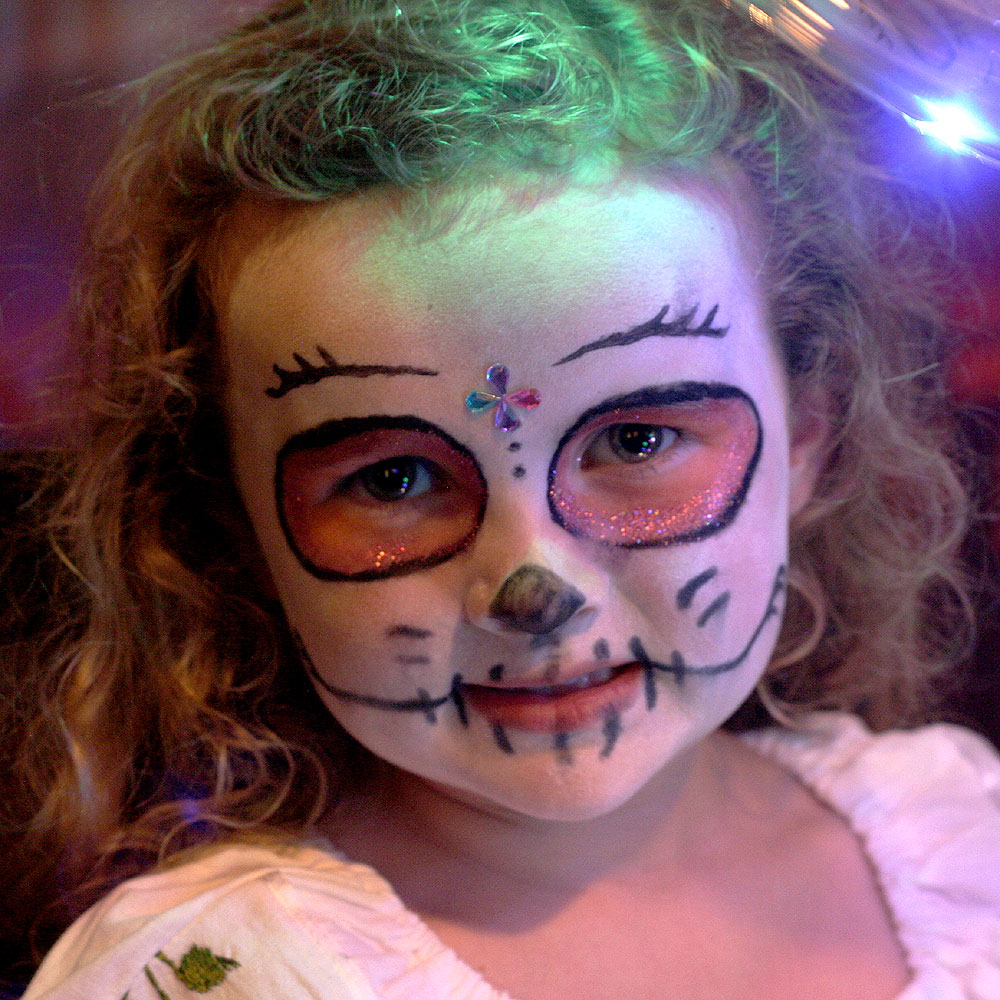



If you want to experience a truly profound and theatrical Mexican cultural event, look no further that the Day of The Dead (Día de los Muertos) in Mazatlan!
Far from being somber, the Day of The Dead in Mazatlan -- and throughout Mexico -- is very much a celebration, and life-affirming.
The Dia de los Muertos holiday observed throughout Mexico is centered on gatherings of family and friends to remember, pray for and celebrate the lives of family members and companions who have died.
The Day of The Dead is celebrated annually on November 1st.
Dia de los Muertos is a synthesis of Christian and pre-Columbian religious beliefs. It falls in the middle of a three day period -- October 31, November 1 and November 2 -- that marks the Catholic holidays of All Hallows' Eve, Hallowmas, and All Souls' Day.
Over the three day Day of The Dead holiday people go to cemeteries to build altars decorated with photos, memorabilia and favorite foods and beverages of the departed and to commune with the souls of the dead. It is believed that the offerings encourage visits by the souls of the deceased, and that the souls hear the prayers and the comments of the living that are directed to them.
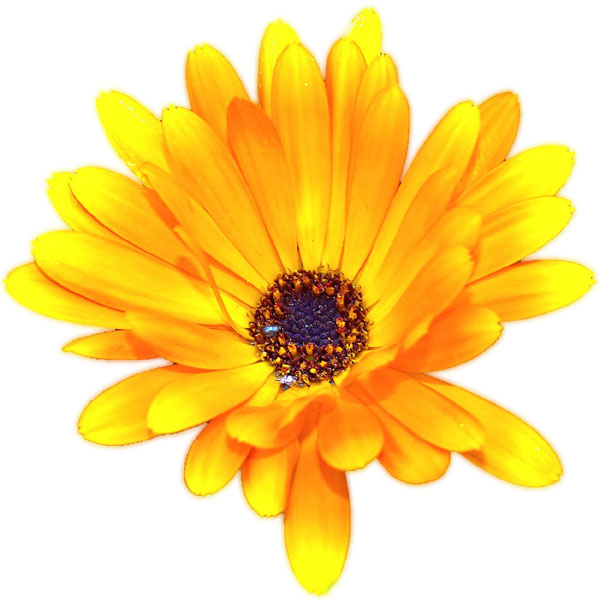
Origins of Day of The Dead celebrations
in Mexico
The roots of The Day of The Dead long pre-date the Spanish conquest of Mexico.
Ancient traditions among pre-Columbian cultures -- especially the Aztec -- included rituals celebrating dead ancestors, and had been observed by indigenous cultures for likely more than 2000 years prior to the arrival of the Spanish Conquistadors.
The Aztec festival that developed into the modern Mexican Day of The Dead fell in the ninth month of the Aztec calendar, about the beginning of August, and was celebrated for an entire month.
The central figure of this festival was the goddess "Lady of the Dead", who roughly corresponds to La Catrina in modern Mexican Dia de los Muertos celebrations.

The most ubiquitous symbol of the Day of The Dead in Mexico is the skull (calavera), which is seen as skull masks and all sorts of other manifestations.
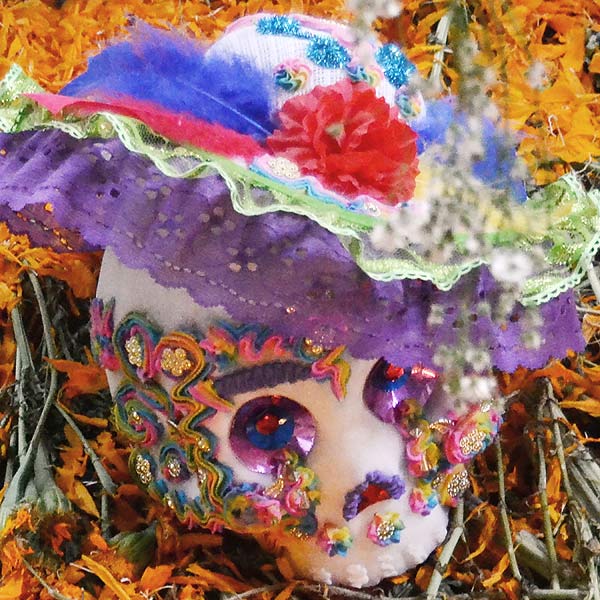
Many of these other manifestations of Calavera are edible, such as sugar, amaranth or chocolate confectionary items in the form of a skull.
Often inscribed with the name of the deceased on the forehead, these sweet-treat calavera are frequently eaten by the living, not simply used as as offerings to the dead at cemeteries.
Other specifically Day of The Dead holiday foods in Mexico notably include pan de muerto, a sweet egg bread made in various shapes and often decorated with white frosting to look like twisted bones.
Video documentary from the British Museum about the Day Of The Dead in Mexico
Meet La Catrina, your hostess for Día de los Muertos
Day of The Dead in Mazatlán
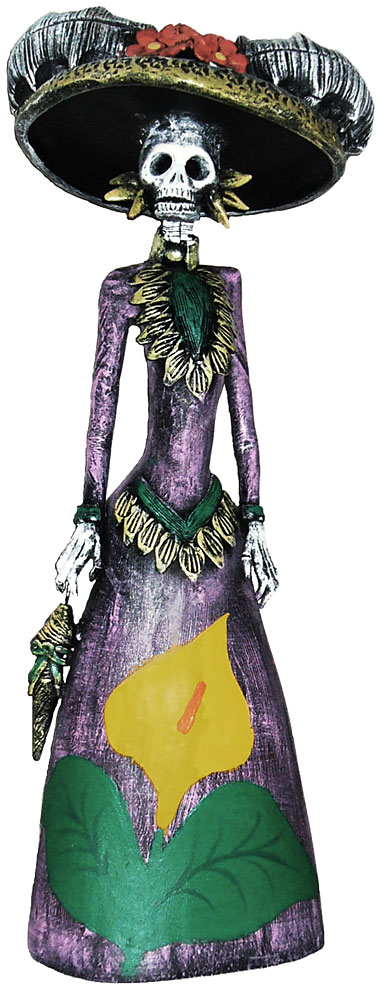
With origins in Aztec imagery and ritual, modern Mexican catrinas are usually depicted as joyous rather than sad or frightening figures. La Catrina is often depicted dancing, playing musical instruments and wearing elegant and / or festive clothing. This joyous depiction of La Catrina draws on the Mexican belief that no dead soul likes to be thought of sadly, that the afterlife is a happy place, and that remembrance should be a joyous occasion.
Catrinas seen in Day of The Dead festivals include full costumes worn by revelers, small figures made out of carved wood, fired clay or stone, and sweets.
Where do the dead go in pre-Columbian Aztec theology - and who looks after them in the underworld?
Finding the roots of Día de los Muertos in Aztec
religious beliefs and myths (a brief history of the
Day of The Dead in Mexico)
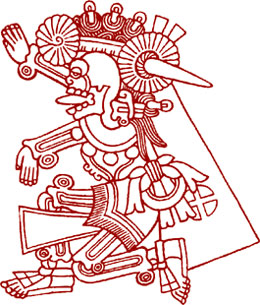
Within this dazzling array of Gods and myths, the modern Day of The Dead is an expression of the persistence of a specific myth, that of Mictlan (the Aztec underworld), its ruler Mictlantecuhtli and his wife, Mictecacihuatl.
This linkage was made explicit in the theme of the fantastically well-received and critically acclaimed 2015 Mazatlan Day of The Dead performance at the Angela Peralta Theater entitled El Umbral de Mictlan (The Threshold of Mictlan).
In Aztec mythology, Mictlan was where the majority of the dead -- there were other destinations specifically for warriors, those who died from causes associated with the rain god Tlaloc and women who died in childbirth -- were fated to spend eternity.
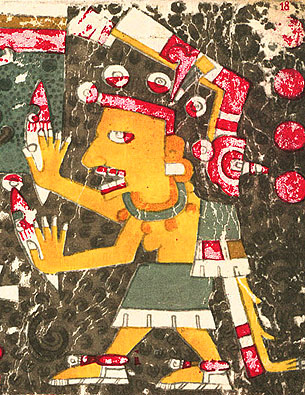
Mictecacihuatl ("Lady of the Dead", depicted to the right from the Codex Borgia), is believed to have been sacrificed as an infant, and is the Queen of Mictlan.
Her role in Aztec mythology is to watch over the bones of the dead and preside over festivals honoring the deceased.
Mictecacihuatl is the most direct symbolic link between the ancient Aztec celebrations and festivals and the modern celebration of the Day of The Dead in Mexico -- she is the root of what has become the modern Mexican La Catrina, the ubiquitous symbol of Day of The Dead festivities.
In a wonderful inversion of the Aztec penchant for absorbing other cultures' Gods and myths, Mictecacihuatl persists, and her avatar now presides over the modern Day of The Dead in Mexico in spite of the Spanish / Catholic domination of indigenous cultures in Mexico and throughout the Americas.




